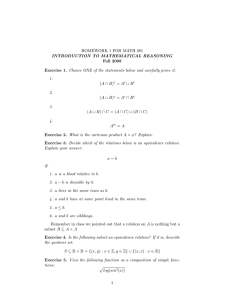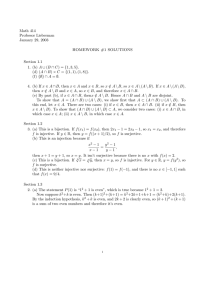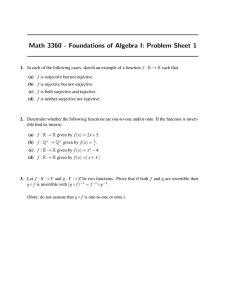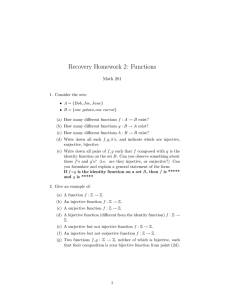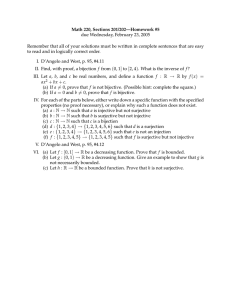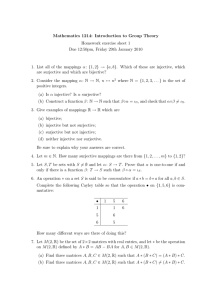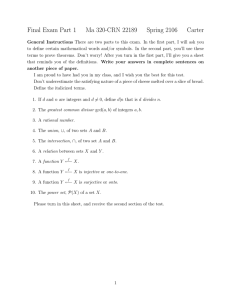Math 434/542 Fall 2015 Definition Sheet, Dec. 7, 2015 Carter
advertisement
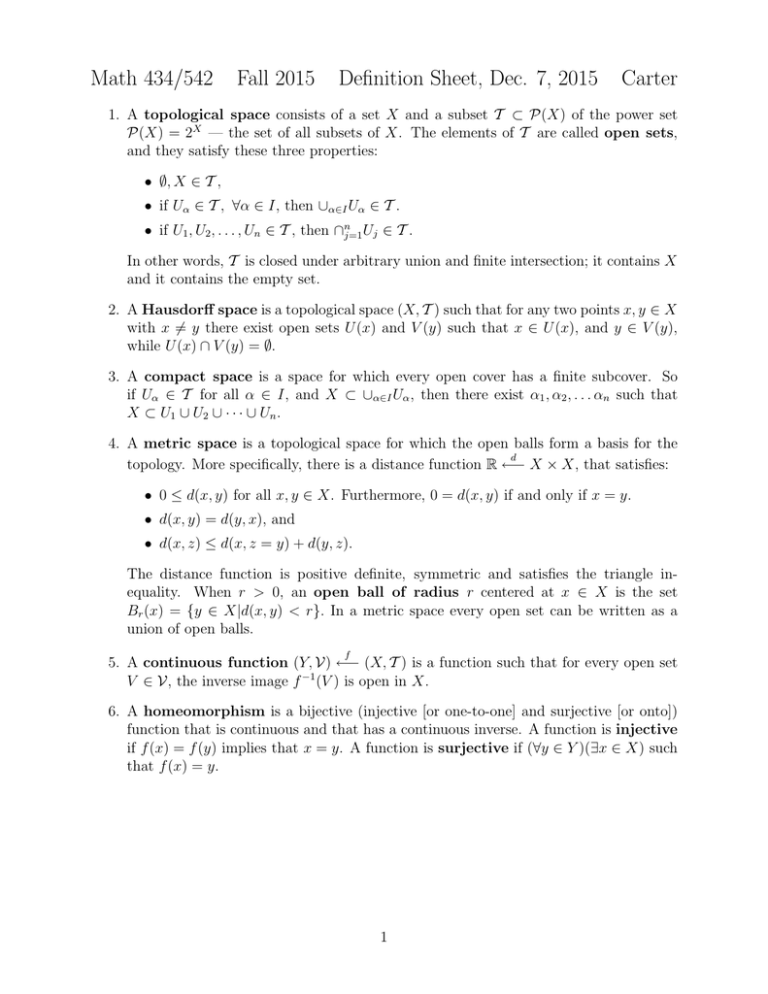
Math 434/542
Fall 2015
Definition Sheet, Dec. 7, 2015
Carter
1. A topological space consists of a set X and a subset T ⊂ P(X) of the power set
P(X) = 2X — the set of all subsets of X. The elements of T are called open sets,
and they satisfy these three properties:
• ∅, X ∈ T ,
• if Uα ∈ T , ∀α ∈ I, then ∪α∈I Uα ∈ T .
• if U1 , U2 , . . . , Un ∈ T , then ∩nj=1 Uj ∈ T .
In other words, T is closed under arbitrary union and finite intersection; it contains X
and it contains the empty set.
2. A Hausdorff space is a topological space (X, T ) such that for any two points x, y ∈ X
with x 6= y there exist open sets U (x) and V (y) such that x ∈ U (x), and y ∈ V (y),
while U (x) ∩ V (y) = ∅.
3. A compact space is a space for which every open cover has a finite subcover. So
if Uα ∈ T for all α ∈ I, and X ⊂ ∪α∈I Uα , then there exist α1 , α2 , . . . αn such that
X ⊂ U1 ∪ U2 ∪ · · · ∪ Un .
4. A metric space is a topological space for which the open balls form a basis for the
d
topology. More specifically, there is a distance function R ←− X × X, that satisfies:
• 0 ≤ d(x, y) for all x, y ∈ X. Furthermore, 0 = d(x, y) if and only if x = y.
• d(x, y) = d(y, x), and
• d(x, z) ≤ d(x, z = y) + d(y, z).
The distance function is positive definite, symmetric and satisfies the triangle inequality. When r > 0, an open ball of radius r centered at x ∈ X is the set
Br (x) = {y ∈ X|d(x, y) < r}. In a metric space every open set can be written as a
union of open balls.
f
5. A continuous function (Y, V) ←− (X, T ) is a function such that for every open set
V ∈ V, the inverse image f −1 (V ) is open in X.
6. A homeomorphism is a bijective (injective [or one-to-one] and surjective [or onto])
function that is continuous and that has a continuous inverse. A function is injective
if f (x) = f (y) implies that x = y. A function is surjective if (∀y ∈ Y )(∃x ∈ X) such
that f (x) = y.
1


